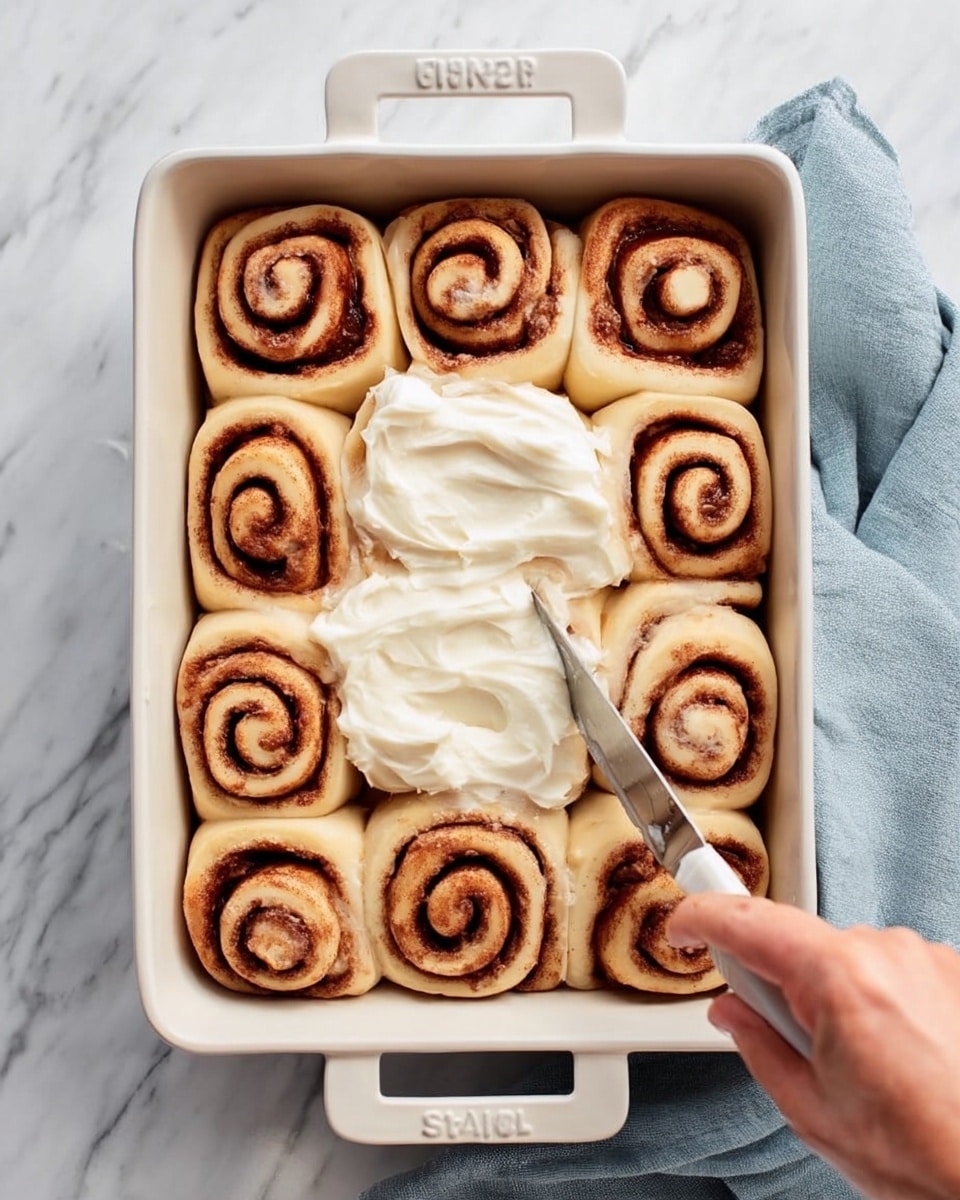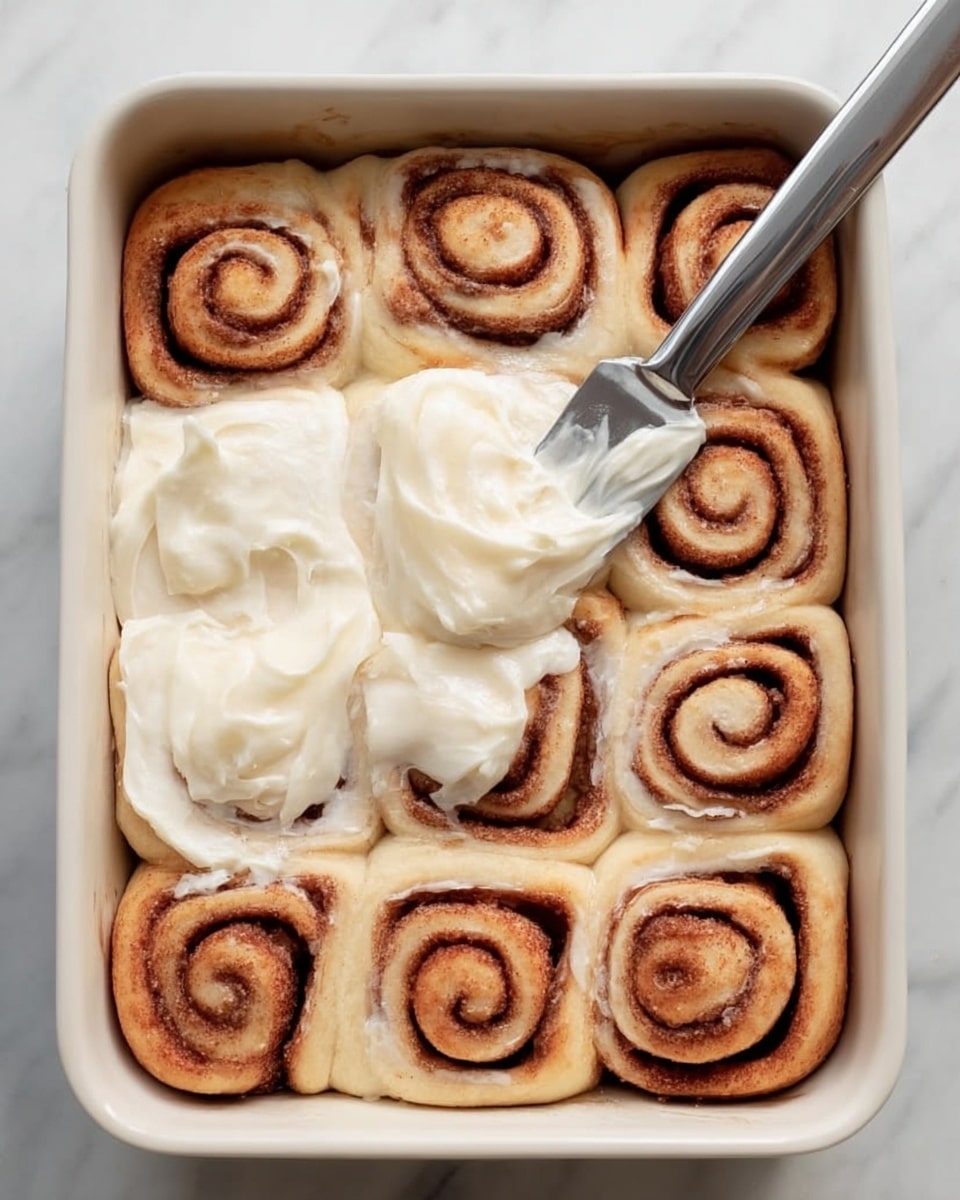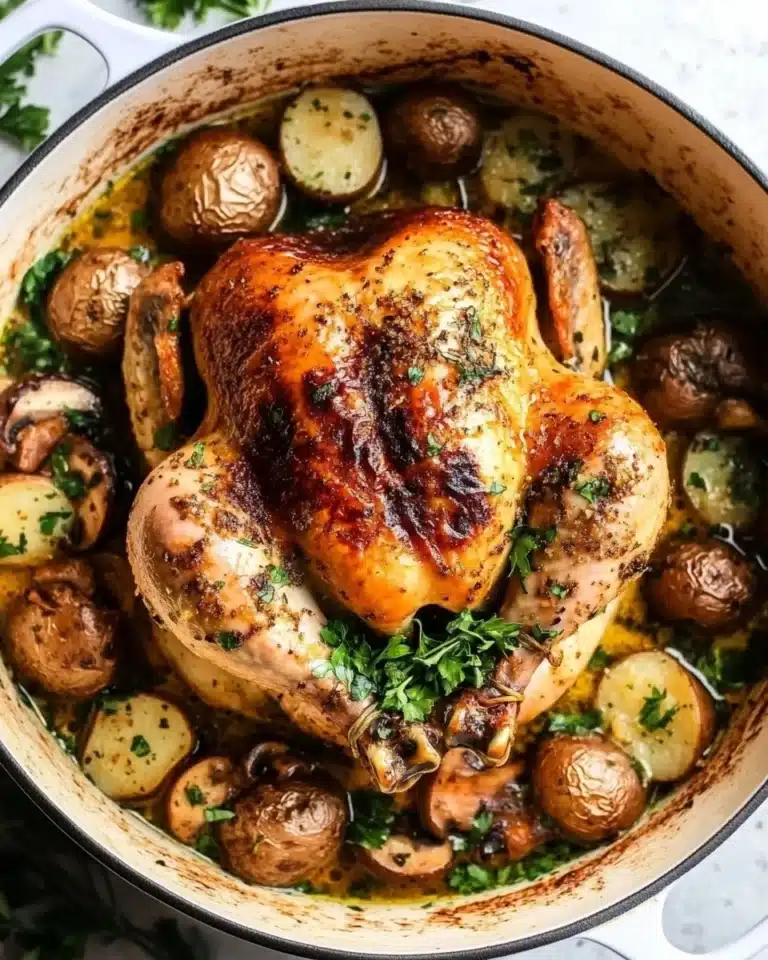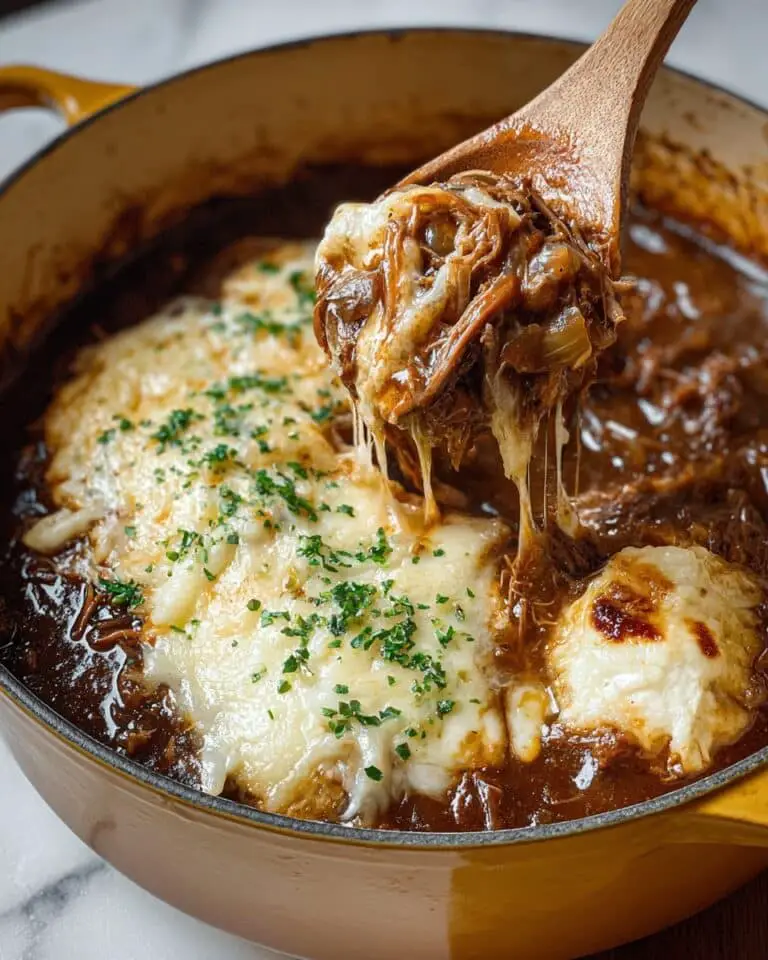I absolutely love this Cinnamon Rolls Recipe because it’s the perfect blend of soft, fluffy dough with just the right amount of cinnamon-sugar sweetness. When I first tried making cinnamon rolls from scratch, I thought it would be intimidating, but this recipe breaks it down into simple, achievable steps that you’ll actually enjoy following. Whether it’s a weekend breakfast or a special treat, these cinnamon rolls always bring that cozy, comforting vibe to the kitchen.
You’ll find that making these cinnamon rolls fills your home with an irresistible aroma that invites everyone to gather around the table. What makes this Cinnamon Rolls Recipe truly special is how versatile it is—you can stick with the classic glaze or swap in a creamy frosting to make them extra indulgent. Trust me, once you try this, your mornings will get a whole lot sweeter.
Why You’ll Love This Recipe
- Simple Ingredients: Uses pantry staples you probably already have on hand, making it easy to whip up anytime.
- Step-by-Step Friendly: Clear instructions and tips help anyone from beginners to seasoned bakers succeed.
- Perfect Balance of Sweet and Spicy: The cinnamon-brown sugar filling is cozy without being overpowering.
- Customizable Toppings: Choose between classic glaze or rich cream cheese frosting depending on your mood.
Ingredients You’ll Need
The ingredients for this Cinnamon Rolls Recipe come together to create that soft dough and flavorful filling you’re craving. I always recommend using fresh yeast and good quality butter or coconut oil—it really makes a difference in texture and flavor.
- Active dry yeast or instant yeast: Ensures a light, fluffy dough when proofed properly.
- Warm water: The right temperature wakes the yeast up without killing it.
- Granulated sugar: Feeds the yeast and adds slight sweetness to the dough.
- Melted butter or coconut oil: Gives richness and tender crumb to the dough.
- Milk (room temperature): Adds moisture and softens the dough.
- Sea salt: Balances sweetness and enhances flavor.
- All-purpose flour: The base that holds the dough together.
- Dark brown sugar: Perfect for a deep, caramel-like sweetness in the filling.
- Cinnamon: The star spice here, warming and fragrant.
- Powdered sugar: Base for the glaze that adds that perfect finishing touch.
- Vanilla extract: Adds a subtle sweetness in the glaze that ties everything together.
- Milk (for glaze): Adjusts the glaze consistency to drizzling perfection.
Variations
I love mixing things up with this cinnamon rolls recipe depending on the season or occasion—it’s fun to personalize so your family never gets bored. Feel free to experiment with the filling or swap out the glaze for something creamy.
- Add nuts or raisins: My family goes crazy when I toss toasted pecans or plump raisins into the cinnamon-sugar filling for extra texture.
- Use cream cheese frosting: Creamier and tangier than glaze, this is my go-to when I want a more decadent breakfast treat.
- Make a vegan version: Swap butter for coconut oil and use plant-based milk to keep it dairy-free without sacrificing flavor.
- Pumpkin spice twist: Add a teaspoon of pumpkin pie spice to the filling for a fall-inspired upgrade.
How to Make Cinnamon Rolls Recipe
Step 1: Activate the Yeast and Mix Wet Ingredients
Start by stirring warm water, yeast, and sugar together in a small bowl. I like to let this sit for about 5 minutes until it’s nice and foamy—that’s a key sign your yeast is alive and kicking. Meanwhile, melt your butter or coconut oil and mix it with room temperature milk, sugar, and salt in a medium bowl. Once your yeast is bubbly, stir it into this mixture so everything is ready for combining with the flour.
Step 2: Combine and Knead the Dough
Pour the flour into a large bowl. Add the wet ingredients and start stirring until just combined—the dough will be sticky, don’t worry! Using your hands, roughly knead it, then turn it out onto a floured surface. Knead the dough for 3 to 4 minutes until it feels smooth and elastic, adding more flour as necessary. I used to add too much flour, which made my rolls tough, so remember: it’s better for the dough to be slightly sticky than overly dry.
Step 3: First Rise
Lightly butter a large bowl and place your dough ball inside, turning it to coat it with the butter. Cover with plastic wrap and find a warm spot to let it rise until doubled in size—usually about an hour. I usually preheat my oven to the lowest setting, turn it off, then place the dough inside to get a nice cozy environment.
Step 4: Prepare Filling and Roll
Mix the brown sugar and cinnamon in a small bowl for the filling. Once your dough has risen, punch it down gently, then roll it into a rectangle approximately 20 by 14 inches on a floured surface. Brush melted butter over the dough, then sprinkle the cinnamon sugar evenly, leaving about half an inch of border. This step is where the magic happens—take your time spreading that filling for even sweetness.
Step 5: Roll, Slice, and Second Rise
Starting at one of the shorter ends, roll the dough tightly into a log. Using a sharp knife, slice the log into 12 equal rolls. Arrange them cut-side up in a greased baking dish, cover loosely with plastic wrap, and let them rise for another hour. This second proofing is crucial for that fluffy, pillowy texture.
Step 6: Bake and Glaze
Preheat your oven to 350°F. Uncover the rolls and bake for 25 to 30 minutes until they’re lightly golden on top. While they bake, whisk together powdered sugar, milk, and vanilla extract to make your glaze. If it’s too thick, just add a splash more milk. Once out of the oven, let the rolls cool for about 10 minutes before drizzling the glaze or spreading cream cheese frosting all over. This cooling time makes sure the glaze doesn’t melt off too quickly.
Pro Tips for Making Cinnamon Rolls Recipe
- Check Your Yeast Temperature: Make sure your water is warm but not hot—about 110°F is perfect to activate yeast without killing it.
- Don’t Over-Knead: Knead just until smooth and elastic; overworking the dough can make rolls tough instead of soft.
- Keep Dough Covered During Rising: Prevent the dough from drying out by covering it tightly with plastic wrap or a clean kitchen towel.
- Use a Sharp Knife for Slicing: A clean cut means your rolls will hold their shape during the second rise and bake evenly.
How to Serve Cinnamon Rolls Recipe
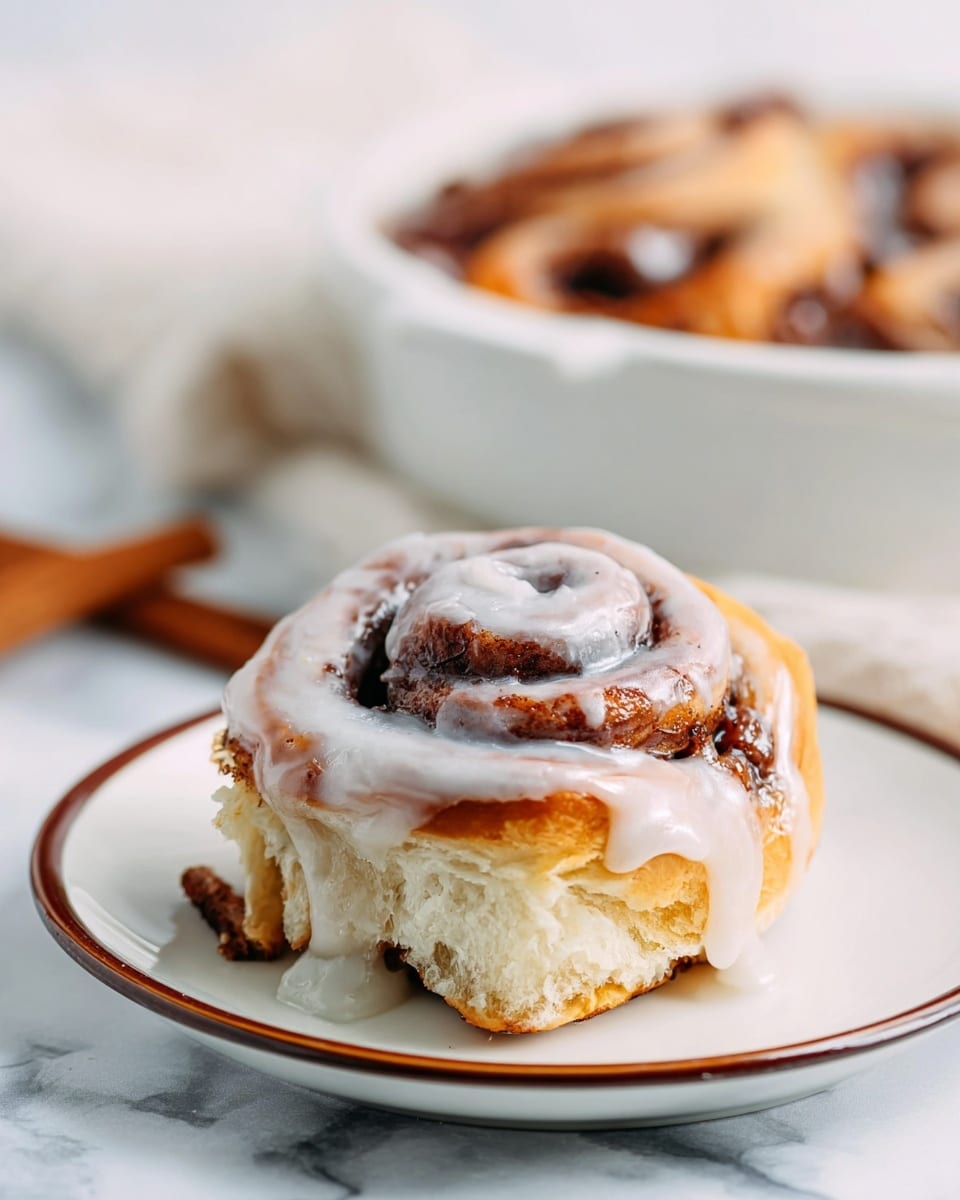
Garnishes
I usually stick to the classic glaze or cream cheese frosting, but sometimes I sprinkle a little extra cinnamon or finely chopped toasted nuts on top for some crunch. If you’re feeling a bit fancy, a drizzle of caramel sauce pairs beautifully and adds a rich, gooey touch.
Side Dishes
Honestly, these cinnamon rolls can star all on their own, but I like serving them alongside fresh fruit or a simple fruit salad for a bright contrast. A hot cup of coffee or chai tea is essential to complete the cozy breakfast experience.
Creative Ways to Present
For special occasions, I’ve arranged cinnamon rolls in a ring shape on a round baking pan to make a beautiful pull-apart wreath—guests love grabbing a warm pull-apart piece! I’ve also tried adding a sprinkle of edible flowers or fresh berries on top of the glaze for a gorgeous brunch centerpiece.
Make Ahead and Storage
Storing Leftovers
I recommend placing leftover cinnamon rolls in an airtight container at room temperature if you plan to eat them within two days. This keeps them soft and delicious—if they start feeling a bit dry, a quick microwave zap with a damp paper towel on top brings back that fluffy, fresh-out-of-the-oven texture.
Freezing
I love freezing unbaked, sliced rolls arranged in the baking dish, covered tightly with plastic wrap and foil. When you want a fresh batch, just let them thaw and rise for an hour before baking as usual. You can also freeze fully baked cinnamon rolls—wrap them individually and pop in the freezer for up to 2 months.
Reheating
To reheat refrigerated or frozen rolls, I warm them in a 350°F oven for about 10 minutes, covered loosely with foil to keep moisture in. For an even quicker fix, I use the microwave at 20-second intervals, adding a little water on a plate to create steam and avoid dryness.
FAQs
-
Can I use instant yeast instead of active dry yeast in this Cinnamon Rolls Recipe?
Yes! Instant yeast can be used as a direct substitute for active dry yeast. You can mix it directly with the dry ingredients without proofing first, which can save you some time. Just be mindful of the rising times, as instant yeast may work faster.
-
How do I know when the dough has risen enough?
The dough should roughly double in size and look puffy and soft. A simple test is to press two fingers gently into the dough—if the indent stays and doesn’t spring back quickly, it’s ready for the next step.
-
Why are my cinnamon rolls dense instead of fluffy?
This can happen if the dough wasn’t kneaded enough, didn’t rise properly, or if too much flour was added. Be sure to knead until smooth and elastic, allow adequate rising time, and avoid adding excessive flour—it’s okay if the dough is a little sticky.
-
Can I make these cinnamon rolls gluten-free?
While this recipe uses all-purpose flour, you can experiment with gluten-free flour blends designed for baking. Keep in mind that texture may differ, and you might need to adjust liquid amounts. Using xanthan gum in the mix can help mimic the elasticity of gluten.
-
How do I store leftover cinnamon rolls?
Store at room temperature in an airtight container for 2 days, or refrigerate up to 5 days. You can also freeze them wrapped tightly for up to 2 months and thaw before reheating.
Final Thoughts
This Cinnamon Rolls Recipe holds a special place in my heart because it’s both approachable and rewarding. The sweet smell during baking, the soft layers, and that gooey cinnamon filling always make mornings feel a bit more magical. I encourage you to try it yourself—you might find it becomes a new favorite weekend tradition for your family, just like it did for mine.
Print
Cinnamon Rolls Recipe
- Prep Time: 30 minutes
- Cook Time: 30 minutes
- Total Time: 3 hours
- Yield: 12 rolls
- Category: Breakfast, Dessert
- Method: Baking
- Cuisine: American
Description
Delight in these classic homemade cinnamon rolls featuring a soft, buttery dough filled with a rich cinnamon-sugar filling and topped with a smooth vanilla glaze or optional cream cheese frosting. Perfect for a cozy breakfast or brunch treat.
Ingredients
For the Yeast
- 1/2 cup warm water, 110°F
- 1 (1/4-ounce) package active dry yeast or instant yeast
- 1 teaspoon granulated sugar
Dough
- 1/3 cup melted butter or coconut oil, plus more for brushing
- 1/2 cup milk, at room temperature
- 1/3 cup granulated sugar
- 1 teaspoon sea salt
- 2 3/4 cups all-purpose flour, plus more for kneading
Filling
- 1/2 cup dark brown sugar
- 1 1/2 tablespoons cinnamon
Glaze
- 1 1/2 cups powdered sugar, sifted
- 3 to 4 tablespoons milk
- 1/2 teaspoon vanilla extract
Other Frosting Options (instead of the glaze)
- 1 recipe Cream Cheese Frosting
Instructions
- Prepare the yeast: In a small bowl, stir together the warm water, yeast, and 1 teaspoon sugar. Set aside for 5 minutes, or until the mixture becomes foamy, indicating the yeast is activated.
- Make the dough: In a medium bowl, mix melted butter, room temperature milk, sugar, and salt. Stir in the activated yeast mixture. Place the flour in a large bowl, then add the wet ingredients and stir until combined. The dough will be sticky initially.
- Knead the dough: Use your hands to roughly knead the dough, then transfer it to a floured surface. Knead for 3 to 4 minutes until smooth, adding more flour as necessary. Shape the dough into a ball.
- First rise: Butter a large bowl and place the dough inside. Cover with plastic wrap and set in a warm place to rise until doubled in size, about 1 hour.
- Prepare the filling: In a small bowl, combine dark brown sugar and cinnamon thoroughly.
- Roll out dough and add filling: Punch down the risen dough and roll it out on a floured surface into a 20×14-inch rectangle. Brush with 2 tablespoons melted butter and sprinkle the cinnamon-sugar mixture evenly over the surface, leaving about ½ inch border.
- Form rolls: Starting from one short 14-inch end, roll the dough tightly into a log. Using a sharp knife, slice the log into 12 equal rolls.
- Second rise: Place the rolls cut-side up into a greased 8×11 or 9×13-inch baking dish. Cover and let rise for another hour until puffy.
- Preheat oven: Set oven temperature to 350°F to prepare for baking.
- Make the glaze: In a medium bowl, whisk powdered sugar, 3 tablespoons milk, and vanilla extract until smooth. Adjust thickness with additional milk if needed. Alternatively, prepare cream cheese frosting instead.
- Bake the rolls: Remove the cover and bake rolls for 25 to 30 minutes until lightly golden on top.
- Cool and glaze: Let the rolls cool for 10 minutes after baking. Drizzle with the prepared glaze or spread cream cheese frosting before serving.
Notes
- Use room temperature milk to help activate the yeast effectively.
- Adding more flour during kneading ensures a non-sticky dough but avoid adding too much to keep rolls soft.
- Ensure the water temperature for yeast is around 110°F for optimal activation.
- Optionally, substitute butter with coconut oil for a dairy-free version.
- For richer flavor, cream cheese frosting can be used instead of glaze.
- Rising times may vary depending on room temperature; dough should double in size.
- Keep cinnamon sugar filling evenly spread to avoid dry edges.
Nutrition
- Serving Size: 1 roll (approx. 85g)
- Calories: 320
- Sugar: 18g
- Sodium: 200mg
- Fat: 12g
- Saturated Fat: 7g
- Unsaturated Fat: 4g
- Trans Fat: 0g
- Carbohydrates: 45g
- Fiber: 1g
- Protein: 5g
- Cholesterol: 35mg

